[Hae-Joo] Pharaoh Sheshi - God's Chosen Shepherd, Father of the Jewish Nation, and Descendant of Noah
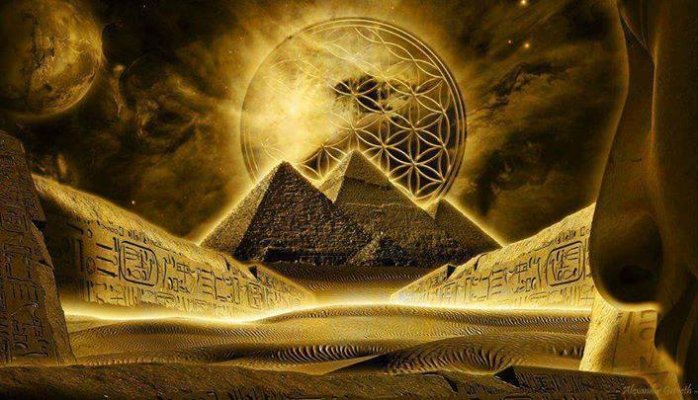
Now this theory is certainly a controversial one by any orthodox interpretation of either the Bible, or the historical record for that matter. I’ve spent quite a considerable amount of time reading forums online that illustrate the ways in which the debate has unfolded, with scholars making attempts at debunking these theories for fear that they take root in the unformed and untrained minds of masses and mislead readers into erroneous conclusion. So I have taken note of these reservations and decided to examine the available evidence and make-up my own mind.
One of the chief reasons why this theory is so polarizing is because it gravitates around the work and research of one man, Ralph Ellis, who has certainly failed to convince anybody within established academia that his theories are of any note or that they should be paid any attention whatsoever. His works are all self-published and are not affiliated with any academic institutions.
Now with that due diligence out of the way, I will further state that I am not an ancient languages scholar, nor a trained theologian. I’m simply someone who’s decided to keep an open mind, and holding no particular desire to jump to any conclusions, have decided to explore a very interesting theory, the possible ramifications of which would force us to entirely reconsider the way we have traditionally viewed History.
From what I’ve read of Ellis’ work, there is without a doubt a noteworthy amount of critical thinking and interesting research that has gone into his body of work, compellingly sourced and certainly worth an earnest pondering and further research.
Before diving deep into the subject, let my finally preface this piece by stating that I do not agree with everything that Ralph Ellis has put forth, firstly because I haven’t read everything he’s written; secondly because he has quite literally theorized a completely alternative interpretation of Western history, which I think should be taken with a grain of salt until more minds can be set to the task of revising all of established history, but also finally, because he seems to have a rational, secular answer for just about every unsolved mystery of history, and on some occasions, even I have a hard time seeing the validity of his deductions. Wherever he sees a hole in a story, he will find something capable of plugging that hole, no matter how insightful and novel of an observation or far-fetched of a stretch he has to come up with to resolve the mystery. Still, it definitely takes a crap-load of knowledge and intelligence to be able to pull it off in the manner that he does. His ideas are refreshing and he certainly brings new perspectives to bear on old enigmas, in an original and honest approach. I think there is great integrity and sincerity in his work.
To fully explore this topic and wrap your minds around it, you may find it worthwhile to brush up on the history of the Egyptian Second Intermediate Period and the Hyksos Pharaos by reading the piece I wrote several months back. - As you like!
😊
Pharaoh Sheshi – the historical Abraham
In my last piece, I explained how Abraham, this central character who’s life formed the basis of the entire story of the Torah, Bible and Quran, seemed to be elude the grasp of historians and archeologists.
None of the Holy Books make any specific mention of his birthplace. All that is known is that his father, Terah, was born in Ur of the Chaldeans, and along with his children and extended family, migrated eastward towards the land of Canaan, a Semitic-speaking region in the Ancient Near East during the late 2nd millennium BC, directly to the North-East of Egypt in the region we now think of as the Levant.
To help you understand the story, here is a map of the journey that was supposedly traveled by Abraham and his father on their way to Egypt. Supposedly, Abraham's father, who was an idolator and not a righteous man by any means, died in Haran. Then Abraham supposedly continued his trek down into Egypt where he settled and became some kind of Chosen One and Father of a Nation.
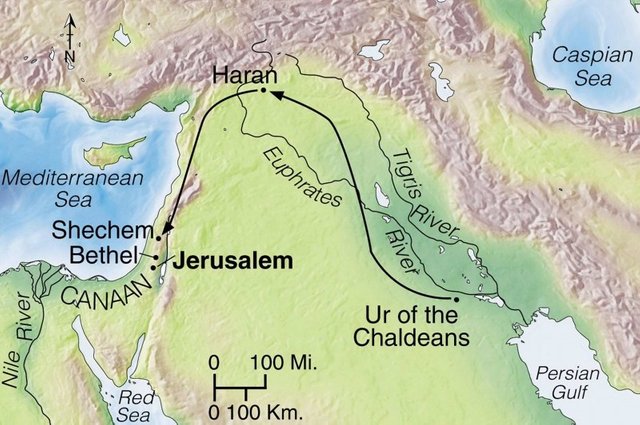
Identifying this Mythical and Mysterious set of Characters
To be able to identify Abraham, we must carefully look at the royal line of Pharaohs and the line of Biblical Patriarchs. The following genealogies are confusing to say the least, because we will be conflating names together to present evidence. I’ll try to make this as simple as possible. We start by taking a look at what the Bible states.
Abraham’s Father was called Terah/Terach in the Bible.
And the Father of Terah was Nahor/Nachor/Naghor.
The first century historian Josephus tells us about a pharaoh called Necho when he tells us about Abrahram:
"Pharaoh Necho, king of Egypt at the time, descended on this land with an immense army and seized Sarah the Princess, mother of our nation. And what did our forefather Abraham do? Did he avenge the insult by force of arms? Yet he had three hundred and eighteen officers under him, with unlimited manpower at his disposal!"
Now the most suitable candidate and closest match to this Pharaoh Necho that Josephus tells us about is a Pharaoh from the 15th Dynasty who went by the name Nehesy.
Nehesy is just one possible transliteration of this Pharaoh’s name. Ellis argues that another valid transliteration could be Nehosy. (Remember, we are dealing with names that originate from Egypt, a land neighboring Semitic Canaan. These two phonetic values of the he and ho in such names could have likely sounded very similar and it is impossible to eliminate doubt from the actual pronunciation, so Josephus’ Necho and the Nehe/Neho of Nehesy may in reality been the same sound two thousand years ago.)
So perhaps Necho and Nehesy were simply different renditions of this pharaoh’s “first name”.
Looking back at the Bible, we see that Terah’s father and Abraham’s grandfather was called Nachor. Now if we take a look at a Josephus’ Pharaoh Necho and our Biblical character Nachor, we see an even more striking similarity between these two names.
Take a look at the web of relationships between these Egyptian Pharaohs and the Biblical characters, by looking at these fathers and sons.
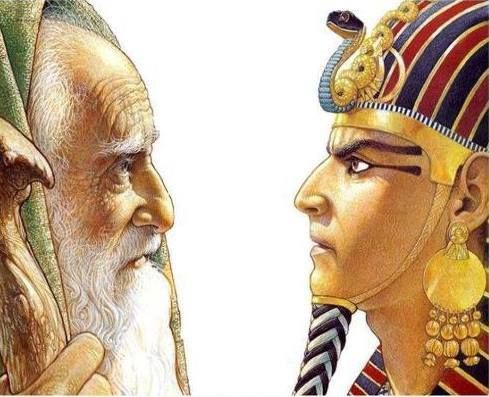
Biblical Nachor’s son was Terah, whereas Pharaoh Nehesy’s son was Sheshi.
Hmmm… Sheshi, that doesn’t look like anything that we’ve seen yet. I guess this was all for nothing. Nice try, I guess.
Pharaoh Sheshi’s throne name was Mayebre. And we know that Abraham was actually born Abram.
Aye – Bre – M / Abram
In this arrangement, what becomes apparent is that these two names are perfect phonetic matches. The M sound of the name has just been displaced to the end of the name.
As we know from Genesis 17:5-6:
Neither shall thy name be called Abram, but your name shall be called Abraham; for a father of many nations I have made thee. And I shall make thee exceedingly fruitful... and kings shall come out of thee.
If this is not already an admission within the Bible of Abraham taking a Pharaoh’s Title and an admission of his royal blood, certainly by taking a look at the Hieroglyphs of Pharaoh Mayebra’s cartouche, we can see that it is even more fitting to the name Abraham than we might have imagined.
Take a look at his cartouche

Now look at the two main glyphs, having been switched around which is how one would get the Abraham name to begin with
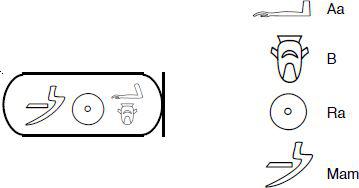
Mayebra: “The righteous one is the heart of Ra”
Ellis contends here that:
“the sickle glyph is being interpreted in the Egyptological world as giving the vocalization of 'ma', but once more the textbooks disagree on such subtleties. Dr. Karl Zauzich says that this design is actually a compound of two glyphs, just as it appears to be drawn in this particular Cartouche, giving the glyph the sound 'mam' or 'mama'. This makes an equivalent difference to the name of this Pharaoh, who now becomes MaMayebra. This 'mam' glyph is very similar to the suffix 'ham' that was given to Abram later on in the Bible, and I think that all the required syllables to construct the name 'Abraham' are now quite plainly visible in this Pharaonic name.”

The little red arrow points to this compound glyph that is used to change the sound of the Sickle Glyph.
This problem with the sickle glyph has obviously taxed many minds, both ancient and modern. But despite overcoming this error, the syllables in the name 'Abraham' still appear to be reversed from their Pharaonic cousin. Quite plainly, there has either been a mistranslation or a little sleight of hand by a biblical translator. All through the Bible, the names of the Pharaohs have been either deleted or tampered with in order to obfuscate the truth - that the biblical patriarchs were Pharaohs of Egypt.
To wrap up this little thought experiment:
The final interesting point is that Pharaoh Nehesy, who’s throne name is Aasahre or Aasahra actually matches very nicely with the Biblical Terah, another transliteration of which could be Thara. And this is because we can cross-reference the name of Abraham’s father in the Bible with the name of Abraham’s father in the Quran. For in the Quran, Abraham’s father is actually named Azar. Whereas an A seems to be missing from Terah at the beginning to make the jump to Aasahre/Aasahra, it seems to be missing from the end of Azar to arrive at Aasahre/Aasahra, if we conjoin the Biblical and Quranic name, we would arrive at something like Aterah or Azara; which does resemble Aasahre/Aasahra.
In other words, where this theory quite nicely ties together, is that it is hypothesized that the father and grand-father of Abraham were actually just one individual in the Egyptian historical record, listed under the two names of the pharaoh Nehesy.
The historical Pharaoh: Nehesy (Aasahra)
The Biblical Patriarch: Nachor (Azar-Terah / Azarah)
Egyptologists still remain very undecided about the reign of Sheshi, of whom very little is actually known for certain. Some of the difficulty is mirrored with problems determining what happened when the Hyksos arrived in Egypt and the Middle Kingdom phase came to an end.
But what I think is an interesting point to take note of is the remarkable amount of artifacts attributed to him that were left behind. Of all the Hyksos Kings, of which very few traces remain, Sheshi is actually the best attested of this period, which spanned the end of the Middle Kingdom throughout the Second Intermediate Period.
Hundreds of scaraboid seals bearing his name have been found throughout Canaan, Egypt, Nubia, and interestingly, as far away as Carthage (so basically from Jerusalem to Tunisia and down to Sudan!), where they were still in use some 1500 years after his death.
This fact alone which is undisputed within the field of Egyptology points to the fact that Sheshi may have actually been one of the most important Hyksos Pharaohs to have been, with one of the longest reigns too.
Some dating methods that Egyptologists use to determine the length of his reign, using Josephus, Sextus Julius Africanus and Eusebius’s accounts of Manetho’s Aegyptiaca cross reference the length of reign of other Pharaoh’s with the number of Scarabs that would have been made for every throne year, with estimates of his reign ranging upwards of 50 years, certainly a long time for a Pharaoh.
Additionally, whereas a large group of Egyptologists believe that Nehesy (which this theory sees as Abraham’s father Terah) may have actually been Pharaoh Sheshi’s son; the 2005 discovery of a stele discovered in the Way of Horus, the passage leading out of Egypt and into Canaan, by Israeli Egyptologist Daphna Ben-Tor, who writes about this in Scarabs, Chronology, and Interconnections: Egypt and Palestine in the Second Intermediate Period (Orbis Biblicus et Orientalis. Series Archaeologica 27) argues that Pharaoh Nehesy’s reign occurred before Pharaoh Sheshi’s.
Given that we are told that Abraham lived to a good old age of 175 years old, what would seem like an incredibly long time by our standards today, I think another fair argument would that that this great number was used to exaggerate and highlight the long life and reign of Sheshi, which might have been substantially longer than a 50 year reign if he indeed waited for his father to die at age 75, as is recorded in the Biblical story of Abraham and Terah.
But on a different wavelength
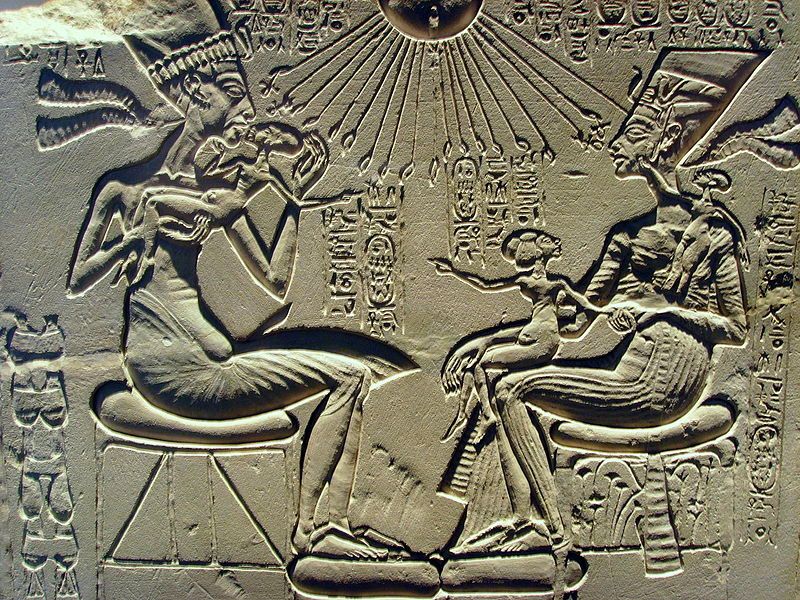
You tellin' me some of these Pharaohs weren't out of this fucking world?
If these “Shepherd King” Hyksos Pharaohs were actually descendants of Noah, as is claimed in the Bible, then would this not make them descendents of the Atlanteans, of Thoth, of those that survived the great flood that wiped out the previous civilization of Atlantis?
For Abraham was married to his half-sister, which I've seen argued was custom among Egyptian rulers of Egypt because they were actually descendants of this previous and decadent Atlantean mankind that had ruled the Earth before the end of the last Ice Age, ostensibly in order to preserve their different, more highly evolved genetics.
Maybe then, for these groups of humans, living 175 years or longer would have been possible, because they were still capable of expressing pre-flood genetic and epigenetic biology.
Maybe it wasn't long however before they did die out, or maybe there are still a few of these critters alive. Elongated skulls?
If we’ve been completely wrong about our Ancient Past, and Egyptologists are actually way far off from the truth, there are many links and hypothesis that need to be explored.
In truth, I don’t think this article barely even scratches the surface. But I think this theory that Ellis seems to have stumbled upon just by pure nerdy fascination and independent research on the topic is fascinating to say the least. I hope I’ve given you a little bit of food for thought, and rest assured if you liked this, there is plenty still coming your way!
Just Getting Started
As a little side-note: Most surviving cartouches of Sheshi, which exist on scaraboid seals, only contain his name Sheshi, and there are supposedly very few with the inscription of his full royal name, Mayebra.
The only picture I can find on the internet comes from “Hall 1913, p. 26.” and the resolution is attrocious… So bad that personally I can only make out the first two hieroglyphs. The website Pharaoh.se does have drawings of what these seals look like, and they do seem to match and also correspond to the ones that Ellis uses. They claim their source comes from Petrie, Scarabs and cylinders (1917), p. 21.
I do find it strangely odd that there are no photos of a Mayebra scaraboid seal online, nor any information about where they are stored or kept that doesn’t date from a hundred years ago. With over 400 admitted scaraboid seals attributed to this Pharaoh, most likely making him one of the most important Hyksos characters during the Second Intermediate Period, it’s strange that they are nowhere to be found online. Supposedly, the seals of Sheshi are now scattered in many different museums, including the Israel Museum, Petrie Museum, Ashmolean, British Museum, Louvre, Walters Art Museum, Metropolitan Museum of Art and the Egyptian Museum of Cairo. Feel free to go have a look if you live anywhere near one of the places!
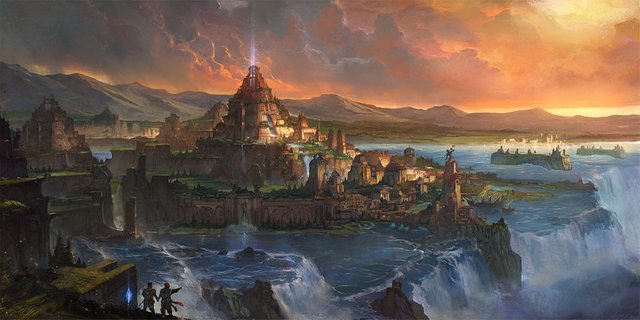
There's something about our Past that is trying to come to Light...
And finally, this isn't even one twentieth of the evidence that Ellis puts forward in his book "Jesus, Last of the Pharaohs". As I will always recommend anyone interested in these thought to do, try to look this up for yourself! I'm just trying to understand it all in my head, so sharing with you here is as much of a learning experience for me as reading the damn book because it forces me to put it all straight. But just like a Manley P. Hall, or a Graham Hancock, I think this guy is certainly on to something interesting, even if I think I ultimately don't come to the same conclusions as him at all. As always, don't accept any truth that you did not naturally arrive at within your own Being and Soul.
Peace and Love Ya'll
Hae-Joo
Sources: Flower-Of-Life-Pyramids / Maps of Ur, Haran and Canaan / Pharaoh or Shepherd? / Mayebra's Cartouches / Akhenaten & Nefertiti / Atlantis
What a fascinating post. I must go back to your earlier essay to catch up. Delighted to hear that you are just getting started and looking forward to the next installment.
'There's something about our past that is trying to come to light' - that certainly resonates and it makes me wonder why so much of the 'cradle of civilisation' has been being sytematically destroyed over the last two decades! Perhaps it is just a coincidence, some might say. I never have believed in coincidence ;)
Hey @ricia
Thanks for reading! The only one it would seem ^^
I think this idea that the ancient Biblical Patriarchs were actually Pharaohs makes perfect sense. So much of "Jewish" culture/religion seems to be borrowed/derived from ancient Egyptian culture/religion. What with all of this Merkaba mysticism and all of this Akhenaten-type monotheism...
The fact that the Biblical Exodus was lead by someone named Moses, Moses being ancient Egyptian for "the son of", as in Thutmoses, the son of Thut.
Ellis has a theory that Moses was actually a brother or a follower of Akhenaten... That after Akhenaten/Amenhotep IV was dethroned and his capital in Amarna was destroyed that there would have been a real exodus... The idea that Bedouins followed him to the Jordan River Valley, a smaller version of the Nile Delta, also makes sense, as some kind of Promised Land.
This idea of there being another humanity before the Fall/Cataclysm/Flood and that they were what we called and perceived as "the gods" also makes sense, and is one of the chief theories of Manley P. Hall, whom I consider to be the smartest Western modern to have ever lived.
In that train of thought, seems that even ancient Egypt was divided, between normal humans, and these hybrid decedents of an earlier race... It's a theory that a lot of random bits of data we might consider to be outliers might actually fall into, and create a completely alternate view of humanity...
I'm so grateful for the work that people do trying to dig all of this information up and drudge up this ancient reality from the past... It's so fascinating and like you say, resonates really powerfully... A lot of this stuff is too strange to be mere coincidence ;)
Thanks for reading though <3
You're the best!! x
Can't understand why I am your only comment. I agree with all you have said in response except what you say about Manley P Hall. I have never read him so could neither agree nor disagree, but I have been a great admirer of Graham Hancock since his 95 book Fingerprints and it sounds like they share ideas as we do. Stay positive HJ :)
Fascinating stuff @imp-unity I especially like the way you reference both the old and the new world .. you know my thoughts on this ;) .. equally the interbreeding still occurs today and it's also my belief that (due to genetic differences) these bloodlines did originally live far longer lives than we do now. I've always found the possible connections between Hermes & Abraham to be fascinating , lots of mileage for research there .. as always a great post my friend!
Hey @perceptualflaws! Great to hear from you <3
Hahaha, I wish I knew all your thoughts! Then I'd be a psychic metaphysical wizard mystic or something! But I know... It's so far from anything we ever dared imagine in the modern period... It still boggles the mind to even conceive what the hell might have been going on here before us and before this day and age...
That's interesting, the link between Hermes and Abraham?
Did you mean the link between Hermes and Noah?
Cos I just had that thought the other day and could find nothing... But supposedly Hermes did travel upon Ra's ship, a kind of light-vessel of some sort... And Noah also travelled on a great vessel...
I don't know what to make of a character like Noah... The "drunkenness" aspect of Noah is strange and I wonder what this symbolically is depicting? Something to the tune of the Atlanteans were really caught off guard, and when they were trying to salvage the remains of their destroyed civilization, they made tons of mistakes?
I do believe though that a hereditary aspect from the ancient Atlanteans / Previous Humanity to ourselves does seem to be recorded in the 5 Books of Moses. The Nephalim certainly is a strange thing to record especially at that point of the story... The "Pre-Noah" world which was of course the era of Atlantis since we know Noah coincides with this great flood
All in all, as you say, lots of mileage for research there...
Thank you so much for reading man <3